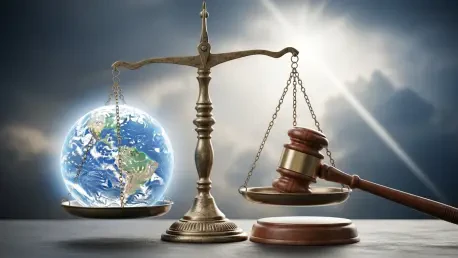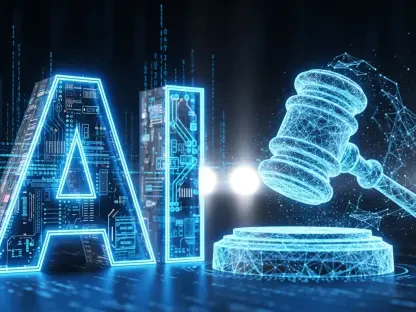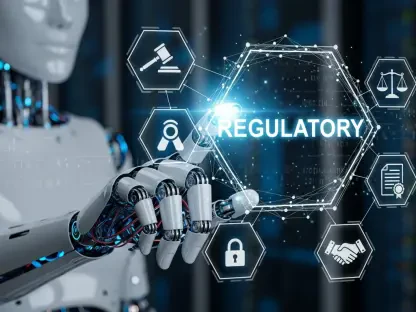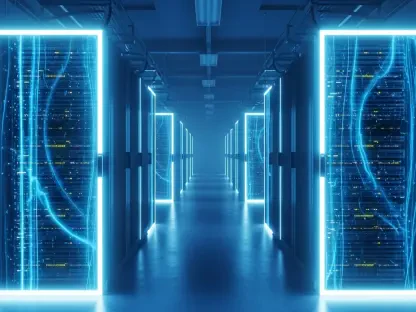The United States Constitution, a cornerstone of American democracy, is often misconstrued by some who distill its profound complexity into a simplistic endorsement of unchecked executive power, ignoring the intricate balance it establishes among government branches. This misinterpretation, sometimes leveraged by political factions to justify expansive presidential actions, dismisses the carefully crafted system of checks and balances envisioned by the Framers. Far from being a document that solely empowers the President, the Constitution distributes authority across Congress, the judiciary, and the executive to prevent any single branch from dominating governance. The intent behind this framework was to safeguard liberty and promote the general welfare through collaborative accountability. This article seeks to clarify widespread myths about executive authority by delving into the Constitution’s comprehensive design and highlighting how it counters notions of unilateral presidential control in modern political discourse.
The Foundation of Constitutional Balance
Framing a Balanced Government
The myth that the Constitution primarily serves to grant the President sweeping, unrestrained power has gained traction in certain circles, often used to rationalize unilateral decisions on issues like environmental policy or government reorganization. Such a view selectively focuses on a single provision about executive authority while disregarding the broader context of the document. The reality is that the Constitution was meticulously designed to thwart authoritarian tendencies by ensuring that power is shared and limited across multiple branches. This balance is not a mere suggestion but a fundamental principle embedded in the text to maintain democratic integrity. Historical debates during the Constitutional Convention reveal a clear intent to avoid concentrating authority in any one entity, particularly the executive, which was seen as a potential risk based on past experiences with monarchical rule. By distributing responsibilities, the Framers aimed to create a system where cooperation, not dominance, defines governance, a principle that remains vital in addressing contemporary challenges.
The Preamble’s Guiding Vision
Central to understanding the Constitution’s purpose is the Preamble, which articulates the Framers’ vision of establishing a government capable of securing justice, promoting the general welfare, and ensuring liberty for all. This was a deliberate departure from the ineffective governance under the Articles of Confederation, which left the federal structure too weak to address national needs. The shift to a stronger federal system reflected a rejection of minimalist governance in favor of a framework equipped to tackle collective challenges, from economic stability to public safety. The Preamble’s emphasis on a unified purpose challenges any interpretation that prioritizes executive dominance over shared responsibility. Instead, it underscores the importance of a collaborative approach where each branch contributes to the common good. This foundational intent serves as a reminder that the Constitution is not a tool for individual power but a blueprint for a balanced, responsive government that must adapt to evolving societal demands without sacrificing its core principles.
The Role of Congress in the Constitutional Framework
Legislative Authority and Fiscal Control
Under Article I of the Constitution, Congress is endowed with critical powers that form the bedrock of legislative authority, directly countering any notion that the President holds unilateral control over the nation’s direction. Congress alone possesses the ability to enact laws, manage federal spending, and regulate commerce, both interstate and with foreign nations. These responsibilities ensure that major policy decisions—whether related to environmental protections, economic reforms, or international trade—rest with elected representatives who reflect diverse public interests. This separation of powers is not a trivial detail but a deliberate mechanism to prevent the executive from overstepping into domains reserved for legislative oversight. The Framers understood that allowing one branch to dominate lawmaking or fiscal decisions could erode democratic accountability, a concern that remains relevant as debates over executive actions continue to surface in modern governance. Congressional authority stands as a bulwark against overreach, preserving the pluralistic nature of decision-making.
Oversight as a Democratic Safeguard
Beyond lawmaking, Congress serves as a vital check on executive power through its oversight functions, ensuring that presidential actions align with constitutional mandates and public interest. This includes the power to investigate executive activities, approve budgets, and confirm key appointments, all of which reinforce accountability. For instance, when executive proposals on restructuring government agencies arise, Congress must evaluate and authorize such changes, preventing arbitrary reorganizations that could disrupt public services. This oversight role is not merely procedural but a fundamental aspect of maintaining the balance of power, ensuring that no single leader can bypass legislative scrutiny. Historical instances of tension between Congress and the executive highlight the importance of this dynamic, as legislative pushback often serves to protect democratic norms. In an era where executive actions can impact everything from climate initiatives to national security, the congressional role in tempering potential overreach remains indispensable to upholding the constitutional framework.
Presidential Duties and Constraints
Defined Responsibilities and Limits
The Constitution clearly delineates the President’s role, emphasizing duties that are both specific and constrained to prevent unchecked authority, a fact often overlooked by those advocating for expansive executive power. Among these responsibilities are the solemn oath to “preserve, protect, and defend” the Constitution and the mandate to ensure that laws are faithfully executed. These obligations bind the President to operate within legal and constitutional boundaries, rather than acting on personal discretion. Additionally, while the President may nominate high-ranking officials, Congress holds the authority to establish offices and define the appointment process for lower-tier positions. This structure limits executive influence over the government’s composition, ensuring that organizational changes reflect legislative consensus rather than unilateral will. Such constraints are essential to maintaining a system where the executive serves the public, not personal or partisan agendas, a principle critical to democratic stability.
Boundaries on Executive Action
Further illustrating the limits on presidential power, the Constitution ensures that executive actions are subject to scrutiny and cannot override the roles of other branches, a safeguard against potential overreach. For example, while the President may propose initiatives or issue orders, these must align with existing laws and often require congressional funding or approval to be effective. This interplay prevents the executive from independently altering policy landscapes, such as environmental regulations, without broader governmental input. Historical attempts to bypass these boundaries have frequently met resistance, underscoring the resilience of the constitutional design in curbing excessive authority. The Framers’ foresight in embedding such limitations reflects an understanding that concentrated power risks tyranny, a concern that echoes in today’s political climate where executive decisions can have far-reaching impacts. Upholding these boundaries ensures that the presidency remains a position of service within a balanced system, not a seat of unchecked dominion.
The Judiciary and the Rule of Law
Judicial Authority as a Check
The judiciary stands as a pivotal guardian of the Constitution, tasked with interpreting its provisions and resolving disputes that arise under federal law, a role that serves as a critical check on executive overreach. The Supreme Court, along with lower federal courts, holds the ultimate authority to determine the legality of actions taken by both the President and Congress, ensuring that neither branch operates outside constitutional limits. Compliance with judicial rulings is not a choice but a mandatory component of the rule of law, reinforcing the separation of powers. This function is particularly significant in cases where executive actions—such as attempts to bypass environmental statutes—face legal challenges, as courts can invalidate measures that violate constitutional principles. The judiciary’s role as an impartial arbiter preserves democratic integrity by preventing any branch from assuming unchecked dominance, a balance that remains essential in navigating complex modern governance issues.
Upholding Legal Precedents
Equally important is the judiciary’s responsibility to uphold legal precedents, which provide consistency and predictability in the application of constitutional law, further limiting arbitrary executive actions. Precedents established through landmark rulings create a framework within which all branches must operate, ensuring that shifts in political leadership do not erode foundational rights or protections. For instance, judicial decisions on issues like federal authority over interstate commerce have long guided policy, preventing sudden executive deviations that could destabilize established norms. This adherence to precedent acts as a stabilizing force, compelling the executive to respect historical interpretations of the Constitution rather than reinterpret it for short-term gain. In an era where rapid policy changes can provoke legal disputes, the judiciary’s commitment to continuity serves as a reminder that the rule of law transcends individual administrations, anchoring governance in a consistent constitutional ethos.
Reflecting on Constitutional Integrity
Looking back, the discourse surrounding executive power reveals a persistent tension between narrow interpretations and the broader, balanced framework the Constitution intended. Past debates, often fueled by actions that tested the limits of presidential authority, underscored the dangers of ignoring the roles of Congress and the judiciary. Reflecting on these moments, it becomes evident that missteps in prioritizing executive dominance over collaborative governance risk undermining democratic principles. Moving forward, a renewed commitment to understanding the Constitution as a holistic document is essential. Policymakers and citizens alike must advocate for adherence to its full scope, ensuring that checks and balances remain robust against overreach. Engaging in informed dialogue about the roles of each branch can foster a governance model that respects historical intent while addressing contemporary needs, safeguarding the rule of law for future generations.









